Insights & Opinion
Soothing the Soul through Photography
09/09/13 18:01

We are exposed to a tremendous amount of triggers every day. Their range goes from traffic over emails, phone calls, social media notifications, work queries, advertisement, television and much more to complete exhaustion not only of our brain, but also of our soul. All these triggers need to be processed and we end up being stressed. And on top of it, some of the triggers are already of a stressing nature by themselves.
At these moments when we think it gets all too much, photography can be the soothing remedy. Photography let us see through the clutter again and focus on what is important and helpful for us. Ideal would be a photography stroll in nature. Both are soul soothing, yet a flowerpot at home does the trick to. Watch the light fall on the flowers and get your camera to photograph it. Your soul can rest in harmony with the camera and the flowers, your focus will come back, clutter will be out of sight and stress will subside.
If you have the chance to go out in a park, forest or zoo, create a little photographic safari for yourself. Dachshunds become jackals, greyhounds cheetahs and the neighbor’s cat a leopard. Have a close look at the trees around you and find the most amazing birds. You might start forgetting where you are and the city park becomes a jungle and the grass fields the Great Plains of the Serengeti and Masai Mara.
Be gentle to your soul and give it some photography time.
Happy snapping!
Ute Sonnenberg for www.rohoyachui.com
The Paradox of Photographing People's Lives
22/03/13 10:05

Sebastiãno Salgado is an amazing photographer, traveling the world photographing people’s lives in difficult circumstances. His images go deep, show the people’s struggle and the respect he feels for them. Sebastiãno Salgada is only one of a number of photographers capturing the lives of the impoverished and unfortunate with respect and great artistic skills. And we as the viewer and buyer love the images and admire the photographers.
But what makes the photographers choose these subjects and what makes us the viewer to love these images?
We want to feel that we live.
In the western world most of the people have a home, work and some sort of security in their lives. For most of the people there is no daily confrontation with danger and death, the own death, which is how we want to live, what we work for, to be safe. Yet it seems that we need the confrontation with death in order to be conscious that we live. One can do bungee jumping or skydiving, do video gaming or embark on adventures themselves and one can also look at art and photographs like from Salgado. I don’t know if people from a dangerous gang controlled city area or an area with no water and food look at and love photographs that show suffering and death like Salgado’s images. They have it themselves, they experience it every day and they are conscious that they live, because they are confronted with the possibility of their own death every day. Or would they like to see the reflection of their own lives?
The paradox is that the need to feel that we live pays the ones who capture the suffering of others well and makes sure they have a secure life, which creates in return the need within them to go out and photograph again. Another phenomenon is that the further away the suffering and death happen the more the viewer seems to be able to love the photographs and to feel the situation of the people there. It seems to be hard to bear when it comes too close and that is completely understandable. The suffering the photographs show is unbearable and hard to cope with and at the end we all want to survive, physically and emotionally.
So, what does that mean? Will photography awards continue going to photographs that show suffering or will happy photos win as well? Will the world sustain its regions of poverty and suffering or will there be a time that efforts pay off and people have food and shelter?
I don’t know, we humans are funny creatures with a very complicated psychological constitution. Maybe it is part of the process of becoming human.
Do we need to feel guilty that we love these photographs? No. We seem to have a very good sense of when a photograph was taken with respect and compassion and the photos keep us aware that there is still a lot to be done in the world.
And how do photo safaris fit in here? Not? What do we experience on a photographic safari that is so addictive? Nature? This is probably something for another post.
Keep enjoying the spirit of photography and its deeper insights.
Ute Sonnenberg for www.rohoyachui.com
image above by Sebastiano Salgado
Intuition Training Explained
19/03/13 08:36

Intuition is not something we need to train for to have it; it is something that is always there, we only need to train ourselves to identify it and to utilize it.
Intuition is also often called gut feeling and without thinking about it we are using it or at least talking about it every day. How often do we have a gut feeling about something to happen and how often are we saying to our friends and colleagues “I knew this would happen”? Pretty much every day, about something or somebody in our personal life or work life.
Many leaders in corporate, or how we call them nowadays thought leaders, base their decisions on intuition. They might not call it like that for the outside world, but for themselves they know they do. That does not mean that they do not look at the numbers and it does not mean that they do not think businesswise, but their intuition lets them look at the right numbers, lets them point out numbers that are not quite right, although they look good. Their intuition lets them ask the right questions, lets them dig deeper where others don’t, their intuition helps them to make the right investments and alerts them when they should step out.
Many of them got to success and successful use of their intuition by falling and standing up, learning by making mistakes and by making right decisions to understand how their intuition talks to them. But even those who are already conscious of the value of their intuition, are mostly not using its full potential and those who are not yet aware of the benefits of their intuition are missing out great opportunities of success.
For the full use of ones intuition and to tap into its enormous resources, one can be trained. The training enables in essence the trainee to see and hear clearly what information is offered by his/her intuition and how to utilize it in daily life and work. And because intuition is something non-physical and non-visible, it helps a lot to make it physical and visible in order to see and hear what it’s trying to provide.
It is easier than it sounds to make something non-physical and non-visible, physical and visible, one only needs a camera. It is that strength of photography together with its easy access and easy handling what makes it the appropriate tool to train intuition. Add an accelerating and supporting environment to that and an intuition training of only 4 days is ready to jump start the beneficial use of intuition for personal and business purposes.
The intuition training enables business leaders of all trades to communicate on intuition level, turns team buildings into new qualities and achieves all that within the relaxed atmosphere of a photographic safari with a photography course, yet the photography course is a bit different.
The technical photography skills of the delegates are not of importance, the camera only needs to be digital. The daily routine is the routine of a photographic safari with a game drive in the morning and a game drive in the afternoon and the delegates will snap away like on a holiday, yet there is a big difference. For every game drive an assignment will be given to the attendees, an assignment only the unconscious is able to accomplish. This makes it easy for the conscious mind, because it can thoroughly enjoy the landscape and animals while the unconscious does the work. To see what the unconscious has worked out, the images will be uploaded back at the lodge and explored according to the assignment. Each assignment has the character of a learning cycle and guides the delegates step by step in identifying the language of their intuition and the information their intuition is providing. The learning cycles of each assignment are part of the bigger learning cycle, the 4 days event itself, starting with departure in Nairobi and ending with arrival in Nairobi on the last day. Within this greater learning cycle the delegates are taken into a different hemisphere, the intuition level and the northern hemisphere where the smaller learning cycles of the game drive assignments take place.
As a result of the intuition training the delegates are able to communicate without words, thoroughly on intuition level, or energy level, and to benefit from the information the intuition level provides to suit their needs in personal life and business. Success becomes sustainable, fueled by the endless resources of the intuition level, also called the endless resources of the unconscious level or energy level as it is called in quantum physics.
Photography is the innovative tool to easy access these resources for beneficial use. It makes photography the most potential tool of the future and the intuition level the never-ending resource of information and knowing to achieve aspired goals.
We all got access to these resources, lets use them.
Ute Sonnenberg for www.rohoyachui.com
How Photogrpahy fixes Things
01/03/13 09:39

Sometimes we enter a room full with people and we feel that there is somehow an undercurrent, something is going on, although everybody seems to enjoy him(her)selve and having fun. This situation occurs also in meetings and work teams, but it is not clear what it is. Something is not right, but one cannot say what it is.
One-on-one conversations are planned to find out what is going on, but they don’t unearth the real reason of the disturbance in the team. The undercurrent develops to be a surface current and irritations pile up. Still words cannot fix it, there is something nobody is talking about or nobody is conscious that it is there. The situation has become very unpleasant. The team can hardly function.
What now? Photography can fix it. What the mind is not able to tell, the unconscious is more than capable to show, because it knows where the problem is and how it can be fixed. Photography becomes the voice of the unconscious. It helps teams to find out what they are struggling with, helps leaders to find the right way in guiding their teams and it is at the end also fun and makes it a very pleasant experience. Team buildings with photography and leadership training with photography are only two ways in helping teams through photography. There are many more.
And what works for work teams works also at home for families, friend groups, dance groups, football teams and wherever people would like to fix unpleasant situations.
Try it. It feels so good when its solved.
Ute Sonnenberg for www.rohoyachui.com
How Intuition Training Helps
08/02/13 08:32
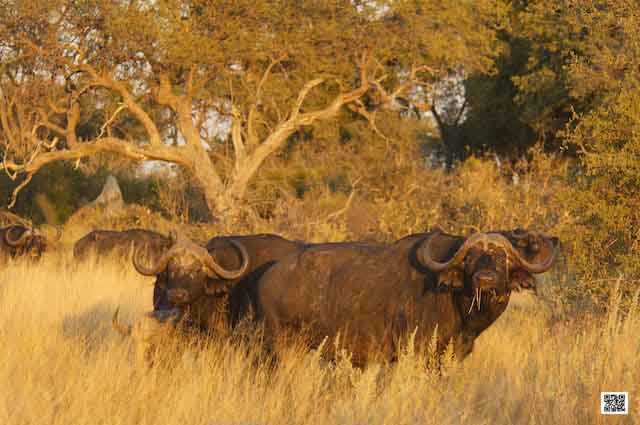
Being a leader in business is a lot about spreadsheets, meetings, challenging decisions, guiding and success, yet it is also is a lot about intuition. Intuition is even an essential part of leadership and the most charismatic leaders like Steve Jobs work(ed) consciously with what intuition tells them. But how do they know that the information is genuine and not noise steering them in the wrong direction?
Some of them learn by doing, taking every now and then the wrong turn and go back onto the path, knowing better next time. Others turn to psychics to get confirmation of what they sense themselves. But there is another way of learning to utilize intuition and being able to get trustworthy information. The reliable tool is photography.
Photography visualizes and materializes what intuition as something on the non-visual and non-physical energy (or intuition) level offers us as enormous information resources. One learns how to tap into this information resource and extract the information needed for a certain business task. Photography is the easy accessible tool to do that; one needs only learn how to use it.
Intuition training helps with that. It works like an incubator and allows within a short, yet intense session to get the basics and to apply the learned immediately in daily work and life. It might sound in the first place like a photo safari with photography course, but this is only how it appears at first. It is an amazing process of gaining access to the immense resources of the intuition level, ready waiting there for us to use them.
Sounds a bit vague? Possibly it does, but it is not, it is very real and we are using it everyday mostly unconsciously. Got a gut feeling?
Ute Sonnenberg for www.rohoyachhui.com
Photography & Business: The Unconscious has the Lead
29/01/13 10:28

Have you ever had a conversation with your gut feeling? Did you listen? What did happen then? Where you one of those who said, I knew this would happen, but didn’t do anything beforehand with this knowledge?
If your answer is yes, you are one of those who know and don’t do anything with it beforehand, be assured you are not alone. There are whole industries built on doubting the gut feeling or better the not listening to intuition. For example market research. Endless tests with focus groups to find out what new products customers want. But how can customers know they want the new product when the product does not even exist as an idea? Steve Jobs did the only right thing. He made the iPod without any market research, just by following his intuition and no doubt, it was a success. Now, one might think, but there are not so many Steve Jobs. Yes there are, they only need to be encouraged and trained to discover and utilize their intuition, because we all got intuition.
Nobody seems to find it weird to act intuitive in photography, choosing the right photography course and the right photo safari by following their feeling, knowing intuitively what is the right course to do and the right destination to visit. Photography is constantly working with intuition, having the finger on the camera’s shutter to press it when the moment to capture occurs. And the results are photos we love.
In other words creative people like photographers run on intuition, now this ability only needs to be applied to business and science, although scientists are very conscious about the role of intuition as Freud and Einstein say themselves:
Sigmund Freud: “Everywhere I go I find a poet has been there before me. Poets are masters of us ordinary men, in knowledge of the mind, because they drink at streams which we have not yet made accessible to science.”
Albert Einstein: “The intuitive mind is a sacred gift and the rational mind is a faithful servant. We have created a society that honors the servant and has forgotten the gift.”
So, lets focus on intuition and the knowledge of the unconscious, visualize it through photography and for whatever answers you were looking for in your business, you will unearth them with a click on the shutter.
Tap into your intuition consciously and access immense resources of knowledge.
Ute Sonnenberg for www.rohoyachui.com
A Story of Disruptive Innovation and Photography
22/01/13 16:59
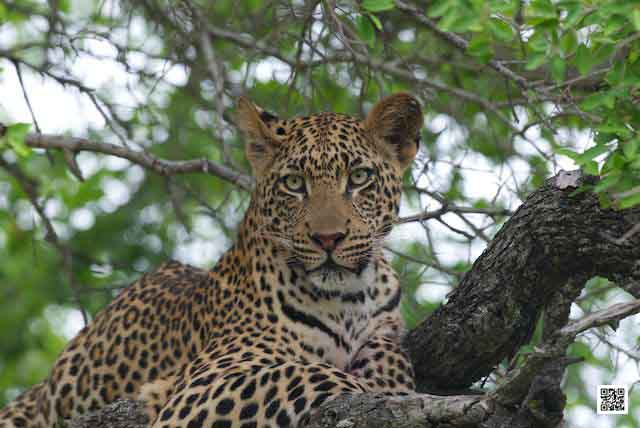
Good ideas often come while we are doing something very boring like driving on the freeway, washing the dishes, doing ironing or other monotone work. We get in some kind of a trance and our thoughts start wandering away and sometimes to places where ideas wait to be discovered. Our mind gets somehow switched off and the intuitive level takes over. In other words our usual thoughts are put to sleep.
Now we got this amazing idea, we quickly finish the dishes and go straight behind the computer to work the whole thing out for implementation into practice. Lets say the idea is a new kind of team building that uses photography to align the energies of the individual team members in order to accomplish the team goals. This might sound complicated, but it is not, its only photography and it will feel like a normal photography course, only the results will be more beneficial for the team. Lets call it an innovative application of photography for business.
How do others experience this innovation? Some will see immediately the fun of photography and will be curious to discover new exciting things. Others might be skeptical and might feel a bit uncomfortable, not knowing how the whole thing will work. For them it might feel disruptive, different from the usual team building they always had and reluctance might creep up, tempted to reject the innovative approach of the team building.
What will win, the reluctance or even rejection or the curiosity, fun and excitement? This is the moment when leadership is needed. At the end the leader guides the team to new success and sometimes something has to disrupt the routine to achieve new levels of achievements.
Another example: Who remembers the Reebok Pump? Here what happened when the innovation was introduced to the responsible people:
“When Continuum pitched an idea to Reebok for a new basketball shoe that would use inflated air to better support the ankle, thereby reducing injuries, the brand manager for basketball shoes said he wasn’t interested because he had never heard about a need for that from a focus group. When we proposed the idea to a high school basketball team, the response was even worse--the players openly laughed at the concept.
But when the team members actually used an early “experiential model” of the shoe during practice, they were won over by how cool it was to have a shoe form-fitted to their feet. Over time, they were even more enthusiastic as they realized they could play more confidently without fear of injury. Like that, the Reebok Pump was born.” (via Co.Create, read the article here)
The Reebok Pump could be called a disruptive innovation. It obviously disrupted the usual thinking and doing, yet when eventually tested all were happy.
There are plenty of examples like the Reebok Pump, also in art and photography. People disliked the painting style of Van Gogh. It was different from the style of other successful painters at this time and Van Gogh’s style might have been experienced as disruptive.
Long story short, disruptive innovation is something revolutionary and photography is a wonderful medium for innovation, within photography and beyond. Use it and be not discouraged when some people might feel disturbed. You might be a new Van Gogh or Rembrandt!
Keep snapping!
Ute Sonnenberg for www.rohoyachui.com
How to Communicate through Images
18/01/13 07:30
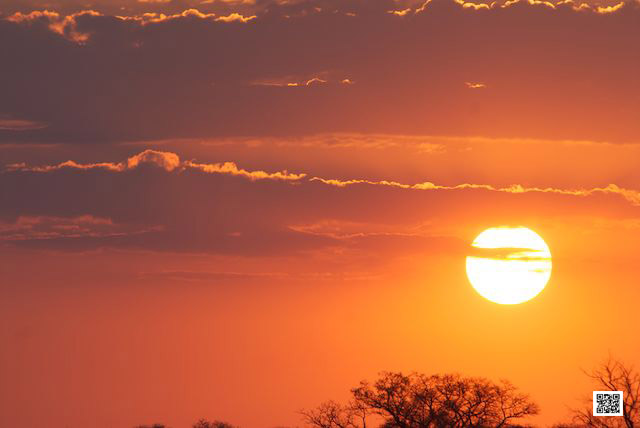
A picture says more than a thousand words. Nothing is truer. Do you know how your granddaughter looks like when her mother tells you or do you rather want a photo of her? But what more is in the picture than her curly hair and her pretty face?
When you look at photographs, you can feel immediately the moment that was captured. Have a look at holiday photos, you on the game vehicle during a photographic safari or you swimming in the ocean or you and your family in the garden at home. You are back in that moment and you can tell immediately everything what happened at that moment, because photography captures a moment in all its dimensions.
This is great to experience holidays again and other memorable moments in life, but it is also very useful for everyday communication and even business communication and success. An image carries all sorts of information and one can utilize that for “noiseless” communication. Nothing is added or removed, the moment is captured or the information one wants to provide or the idea one wants to share. The image carries it, accessible to anyone at any time.
And the image tells even more than the eye first sees. Also the emotional dimension and intuitional dimension are captured and carried by the image. For what would one need that when showing a photo of a granddaughter? Grandmother would feel immediately if the child was happy or not, although it might show a smile, she would feel. And what works with the granddaughter works for all communication through images, for a decision to buy a house or to manufacture new shoes or to acquire a company. All information for decisions is in the image, one needs only to read it.
And here comes the most interesting part. We always read all dimensions of an image, like the grandmother the mood of her granddaughter, but we do that mostly unconsciously. In order to use photography for communication, we only need to do it consciously and we have an everyday practical and easy tool of visual communication.
Ute Sonnenberg for www.rohoyachui.com
Visit also Intuition Training, using communication through images.
Take an External Perspective for Better Insight
17/01/13 08:23
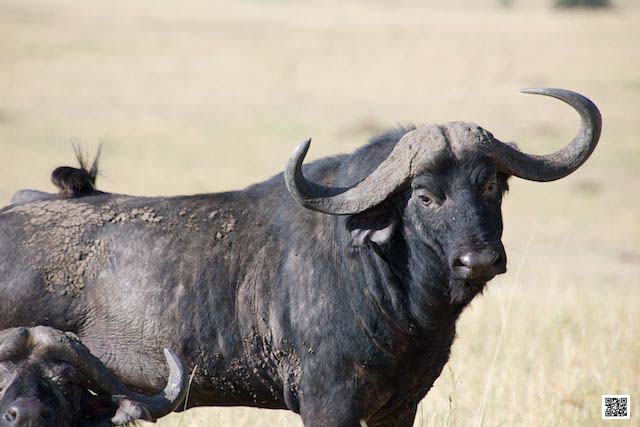
When you visit a museum, where do you stand to look at a painting? Do you stand right in front of the wall, your nose almost touching it or do you stand looking from a distance? Well, if you want to see exactly every brush stroke, you got to come close, but when you want to see the entire masterpiece, you got to watch from a distance.
Talking about an accident is easier when you were witnessing it rather than being involved yourself. You might become emotional while talking when you are one of the victims.
These are two everyday life examples, that having a distance allows a better view on things in their complexity. One can “walk” around a problem or case and see all its aspects from different angles, which result in deeper insights. Innovative leaders will practice that method and photographers do that as well, constantly.
Pretty much every camera has a zoom and if not in the camera, the photographer has most likely a zoom lens. And what are they doing? Zooming in and out constantly to capture the subject the way they experience it, some more closely, others more from a distance. A photographer has always an external perspective and that makes it possible that they can photograph scenes one can hardly look at. Like being a victim of an accident or witnessing an accident, being a witness gives the distance and the insights.
Ute Sonnenberg for www.rohoyachui.com
Photography for Thought Leaders
16/01/13 07:49

Thought leaders are the men and women who guide whole nations and economies into the future, only think of Steve Jobs and his visionary spirit. There is a common sense that visual content, visualizations and pretty much everything will have a virtual existence in the future and that can only mean that photography will play a major role also for thought leaders. How are they communicating in a visual age? Most likely through images and even being not a thought leader one takes rather a photo of a house than trying to explain the husband which house could be a possible home and why. Thought leaders will communicate with their teams through images, team buildings will use photography to align the team members and successful leadership will be measured on how good a leader can communicate with visual content and visualize goals.
Well, none of the leaders needs to be a photographer to be able to communicate through photography, a cell phone is enough, yet there might come a big increase of hobby photographers out of it as well. And that would be great. Photography is just magic.
Ute Sonnenberg for www.rohoyachui.com
Dont' Fear Failure, fear Fear Itself
15/01/13 11:47

What do you think about yourself as photographer? How do you feel when others look at your photographs? Probably you feel insecure and afraid that they might not like your photos. Maybe you think during a photo assignment constantly “I hope they will like it” and in photography courses you dare not to ask a question. Sound familiar?
If your answer is yes, you will also know how the results look like when you were afraid of failure during a photo shoot. Most likely you were not happy with them. Maybe your camera was shaking and the subject was not in focus. And for wildlife enthusiasts a lot of other fears can come on top of the fear of failure during a photographic safari, like the fear of the camera getting to dirty, the fear of getting lost or of being run over by elephant. Seems that there are many things in photography one can be afraid of. But the one thing one really needs to be afraid of is the fear itself.
Being afraid makes a photographer being less engaged with the light and subject and even worse, the fear will show in the images.
Be conscious that not everybody will love your photographs, but that doesn’t mean they are a failure, they just do not appeal to them for individual reasons. And there are no stupid questions. So, just ask what you want to ask in any photography course. Learn from other photographers, but do not compare yourself with their awards and magazine cover success. You are going your own way in photography and who had thought that Van Gogh would be world famous now at the time he lived? Maybe just time is not ready for you, but you are ready to enjoy your photography and keep doing that and be not afraid, there is no failure.
Happy snapping!
Ute Sonnenberg for www.rohoyachui.com
Is Google Saving the Rhino?
11/12/12 18:00
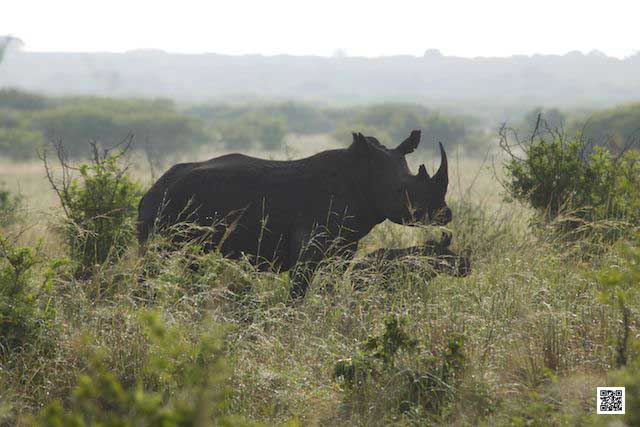
About 600 rhinos have been killed this year in South Africa alone for the myth of their aphrodisiac powers. There seems to be nothing that can stop it. Expensive anti-poaching programs and high sentences on the captured poachers seem to have little effect. The number of killed rhinos this year is significantly higher than last year and it is not only the dead of the animals that is shocking it’s also the brutal way they get killed, often left behind to bleed to death.
But there might be help from an unexpected source, Google! Google is funding the development of drones that hunt illegal hunters (poachers). The WWF wanted to hunt poachers with this unorthodox “weapon” and it seems to work. The drones are not armed, but they are the eyes in the sky for the ground troops. They were tested in Nepal and are to be implemented in the rest of the world, including Africa.
“Now, wildlife-protecting drones are coming to the rest of the world. Last week, Google announced they would help the WWF purchase African and Asian poacher-seeking UAVs . As part of Google's 2012 Global Impact Awards program, the WWF received $5 million to buy similar unarmed drones to watch and track African wildlife poachers.”
There might be light at the end of the tunnel and rhino poaching can be stopped. It would be such a good and peaceful application combining an initial war device and new economy money.
Seems there is hope and Google is really fighting the evil.
Read the full article by Fast Company here.
Ute Sonnenberg for www.rohoyachui.com
Design Duo Steve Jobs and Philippe Starck: The Yacht
29/10/12 16:12

What happens when great creative minds like Steve Jobs and Philippe Starck are collaborating? A product of a different kind comes out and in this case Steve Jobs’s private yacht.
Yesterday on 28th October 2012 the yacht was unveiled at the Dutch shipyard Koninklijke De Vries in Aalsmeer. A masterpiece of minimalistic design and 70 – 80 meters of craftsmanship with the name Venus.
Read the complete article on Mashable and watch the video on the Dutch site OneMoreThing.
It will be interesting to learn what technology was built into the yacht and what new products might come out of it for all of us. The Apple TV?
Enjoy the piece of art!
Ute Sonnenberg for www.rohoyachui.com
Take a Dose Steve Jobs and You are Ready to Change the World
06/10/12 11:13
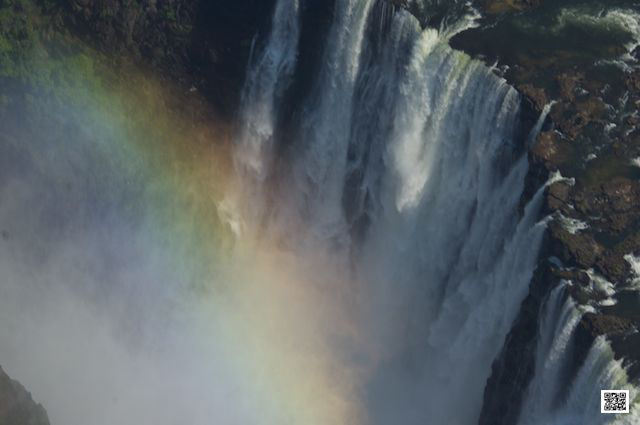
Yes, he is not with us anymore, at least not in person, but his spirit is here and ready to give us the push we might need to continue with our photographic journey, changing the world or whatever other creative passion is leading us.
Need a dose “Steve Jobs” today? Here some treatment proposals
Quotes:
Have the courage to follow your heart and intuition. They somehow already know what you truly want to become. Everything else is secondary. (Steve Jobs)
Your time is limited, so don’t waste it living someone else’s life. (Steve Jobs)
The only way to do great work is to love what you do. (Steve Jobs)
Videos:
Steve Jobs Stanford Commencement Speech 2005
Steve Jobs and Bill Gates at D5 Conference
Steve Jobs talks about the Crazy Ones- who think different
Better? Enjoy moving forward.
Ute Sonnenberg for www.rohoyachui.com
How to Visualize Your Gut Feeling
28/08/12 18:41
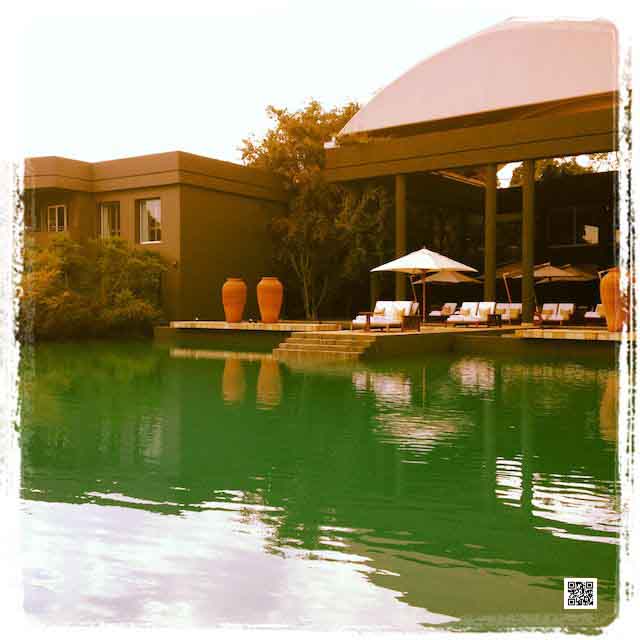
Have you ever had the feeling that something would happen, like your best friend would get the job he was so worried about and then he did or you did get the questions in the exam you were so afraid of getting, but refused to listen and learn for it? A typical reaction is that we say: I knew this would happen. So when you knew it would happen, why didn’t you do anything with that knowledge?
Our gut feeling is not something we can touch, smell or taste and it is not visible either. That makes it difficult for us to rely on it and trust it. Photography can help us a great deal in making it touchable and visible. We can photograph our gut feeling, not by photographing ourselves, but by just shooting away when we have the feeling that our gut feeling wants to tell us something and we don’t get it. It will make us photographing exactly the subjects that represent what it is trying to tell us. We just need to learn to trust, see and read the information in the image.
The image is the visualization of our gut feeling and when we print it, it becomes touchable as well.
When you try it, do not think about the photo or subject, thoughts will distort the visualization. Shoot with your gut or better call it heart. Be cautious with quick interpretations of what is in the image, distracting thoughts might do that. You will rather feel what you see. If you wish to learn how to use this tool for daily decisions, a training called Intuition Training is available.
The difficult part is not the photograph or the gut feeling or the heart. Thoughts can be a distorting factor and it is the art of clearing the channel from these kind of thoughts one got to learn.
Ute Sonnenberg for www.rohoyachui.com
Facebook's Emotional Limitations and its Effect on the Downfall of the Shares
20/08/12 16:33

Facebook only made recently the step from private company to public company and in the company’s vision, the founder’s influence is still recognizable. This personal note to the concept of facebook is part of the success, yet like with anything else it got also its downside. The bright side of facebook is the creation of space to connect and share, its downside is the desire to control and that clashes with the demands of shareholders of a public company.
Facebook adverts are a great marketing tool, allowing precise planning, targeting and budgeting of adverts, but Facebook itself decides where and when your adverts appear, who sees them and at what time of the day. So if you decide on a certain rate you wish to pay for a click, it is possible that this rate is only good enough to show your advert between 2 and 3 at night and you start wondering about the slow going clicks and the kind of people responding to your advert. It is like a magical hand is moving your advert around in its own interest, not in yours.
If you decide to have a business page on facebook to engage with your clients, you might do adverts to let people know that you are there and they can become fans to be informed what you are up to. Now you think, that what you post gets to the people who became a fan of your page, but this is not the case. Only a small percentage of your fans gets to see your posts and your posts have to create immediate likes in order to be allowed to be seen also by more fan’s. If you are lucky your posts make it to be posted to almost a quarter of your fan’s feeds, for the rest facebook recommends promoting your post with an advert. But it doesn’t tell how many fans will be allowed to see then the post or if another promotion tool will come up.
Whatever you do on facebook, whatever adverts you pay for, it never means it gets the exposure and engagement you thought you were paying for. It’s like holding a sausage in front of a dog, letting the dog jump, beg and get a little bite from the sausage and when the dog thinks he will be rewarded for all his efforts, the sausage is pulled away. When you try sending a message to your page’s fans, you will notice that you don’t have access to all your fans, only to less than 5% and sending a message with an URL can not exceed the number of 5 messages per day, without URL about 20 messages per day.
How does that stimulate businesses to be active in advertising and fan pages? Many are companies active, because little bites are allowed to be taken from the sausage, but for how long are they willing to be treated like that? And for how long are they willing to pay big amounts of money for small bites and for being controlled?
The downfall of the Facebook shares shows that the controlled freedom on facebook has come to a point that essential strategic changes need to be done. Otherwise it will not only be the downfall of shares, but of facebook.
Ute Sonnenberg for www.rohoyachui.com